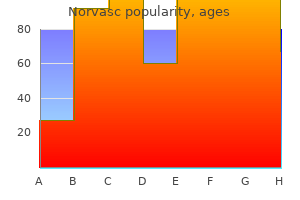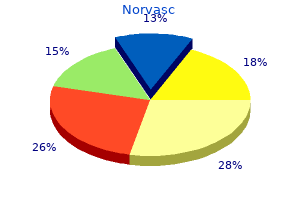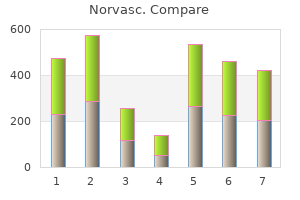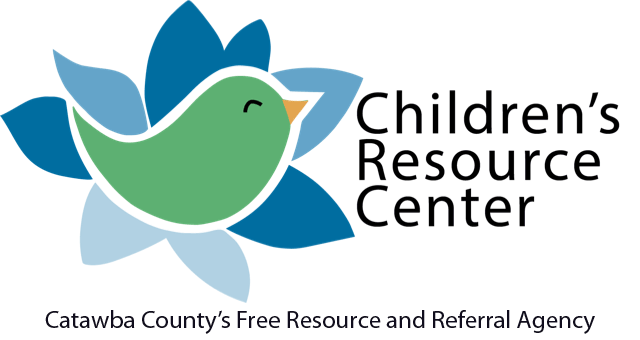Mitra Taghizadeh, MS, MT(ASCP)
- Former Assistant Professor
- Department of Medical and Research Technology
- University of Maryland School of Medicine
- Baltimore, Maryland
Husseini heart attack 5 days collections 5 mg norvasc mastercard, Birzeit University University Ra q Husseini exforge blood pressure medication order generic norvasc from india, Welfare Association Fathi Abumoghli blood pressure medication yellow pill discount norvasc online, Palestine Ministry Ajay Mahal blood pressure wrist monitor order norvasc amex, Harvard University of Health (in association with the Faris Massoud World Bank) Rashad Massoud, University Research Zeid M. Carlin, United States Agency University for International Development Tou k Shakhshir Ellan Coates, Maram Munther Al Sharif, Palestine Ministry of Khuloud Dajani, Al-Quds University Health Nahil Dajani, Dajani Maternity Hospital Hossam K. Sharkawi, Palestine Red Rajai Dajani, Dajani Maternity Hospital Crescent Society Anwar Dudin, Al-Quds University Raghda Shawa Rita Giacaman, Birzeit University Husam E. Gregg Greenough, Johns Hopkins Ricardo Sole Arques, World Health University Organization Arafat S. Hidmi, Makassed Charitable Suzy Srouji, United States Agency for Society International Development Rafaella Iodice, European Union Teodore Tulchinsky, Hebrew University Emil Jarjoui, Palestine Liberation School of Public Health Organization Henrik Wahlberg, World Health Anne Johansen, World Bank Organization Salam Kanaan, World Bank Laura Wick, Birzeit University Health 297 Appendix 7. As part of this larger project, our working group is leading an analysis of the Palestinian health system. Our goals are: 1) to understand the strengths and gaps of the current system, with respect to organization, human and physical infrastructure, and nanc ing; 2) to identify major priorities for future development and investment, over ap proximately the next ten years; and 3) to estimate the nancial cost of reaching various development goals. We are currently planning to visit the region in May to meet with key Palestinian, Is raeli and international stakeholders. The analysis includes consideration of economic, demographic, governance, education, health, public safety, security, and natural resource issues. Where appropriate, the analysis includes consideration of policy alternatives that re ect choices that might face the key participants in the process of creating such a state. This study adopts a long-term perspective, recognizing that many short-term prob lems will also have to be solved in the process. It assumes that a successful Palestinian state should ultimately bring stability for Palestinians, Israelis and the region. It also assumes that substantial resources will be required from various sources in order to establish and support the institutions and infrastructure necessary for a successful independent Pales tine, and it seeks to estimate the necessary resources associated with key policy alterna tives. By identifying the needs for a viable state and quantifying the costs of such a develop ment, the parties will have a realistic appraisal of what is possible and what it will cost. Kenneth Shine and Jerrold Green (co-Project Directors), Michael Schoenbaum (leader, Health working group), Glenn Robinson (leader, Governance working group), Robert Hunter (leader, Security working group), Jack Riley (leader, Pub lic Safety working group), Mark Bernstein (leader, Natural Resources working group), Cheryl Benard (leader, Education working group), Brian Nichiporuk (leader, Demo graphics working group), and David Gompert and Richard Neu (senior advisors). The overall goals of our analysis of the Palestinian health system are: 1) to un derstand the strengths and gaps of the current system, with respect to organization, human and physical infrastructure, and nancing; 2) to identify major priorities for future development and investment, over approximately the next ten years; and 3) to estimate the nancial cost of reaching various development goals. We recognize that there is a well-established Palestinian national health planning process. This process has led to several National Health Plans that contain detailed targets for improving health status and for developing health manpower and physical infrastructure. Our project therefore focuses on key institutions and programs that are necessary for the Palestinian health system to operate successfully, and options for strengthening these institutions. As above, however, the overall focus of this project is on fostering the success of a future independent Palestinian state. For purposes of this project, we therefore do not focus on short-term strategies for operat ing the health system under the current conditions. Instead, we focus on longer-term health system development, under the assumption of unrestricted travel within the West Bank and Gaza. Planned Trip to the Region We are preparing for a trip to Palestine and Israel in May, during which we will meet with key Palestinian, Israeli and international stakeholders regarding the Palestinian health system. Based on your knowledge of the institutions described above, how well do those institutions currently function in the Palestinian health system Have we left out any key institutions that need to be strengthened in the Palestin ian health system What are the major barriers that a ect successful development of the Palestinian health system Finally, we will want to collect information on the potential costs of implementing various policy options. Although our mission is to conduct in dependent analyses, we will coordinate with these other projects as much as possible. If you have questions about this project or would like additional information, please feel free to contact any of us directly using the contact information listed above; or through our representative in Jerusalem, Ms. We interviewed representatives from several of the participating organizations during our visit to Palestine and Israel in May, as listed in Appendix 7. We recognize that most or all of the issues we address here have been addressed in previous plans and analyses. We have tried to apply an independent perspective and to build on and extend previous work to maximize the relevance of this analysis. Dandies, Nutrition & Quantitative Food Assess ment, Palestinian Territories, 2003, Jerusalem, 2004. Arab Medical Welfare Association, Medical Bulletin Continuing Medical Education, Vol. Fragiacomo, The Palestinian Health System: An Updated Overview, Ramallah: Health Development Information and Policy Institute, March 2000. Belgian-Israeli-Palestinian Cooperation Project in Applied Scienti c Research, Training and Education, Policies and Strategies of Future Israeli-Palestinian Academic Cooperation Draft Report on Public Health, mimeo, November 1999. Economic Cooperation Foundation and Palestinian Council of Health, Building Bridges Trough Health, Israeli-Palestinian Cooperation in Health, Medicine and Social Welfare, 1999 Report, February 2000. European Commission and Eurostat, Euro-Mediterranean Statistics, Luxembourg: European Committees, 2001. International Crisis Group, Islamic Social Welfare Activism in the Occupied Palestinian Territo ries: A Legitimate Target Palestinian Authority Ministry of Health and Al-Quds University, Report on Iodine De ciency Survey in West Bank and Gaza Strip, April 1997. Palestinian Council of Health, The Nursing Human Resource in Palestine, January 1997. Palestinian Council of Health, Planning and Research Centre, The National Health Plan for the Palestinian People: Objectives and Strategies, Jerusalem, April 1994. Partnerships for Health Reform, Jordan Embarks on Health System Reform to Preserve Health Gains and Expand Coverage, Jordan: Partnerships for Health Reform, September 1997. Primary Health Care Preventive Medicine Department, Palestine Annual Communicable Dis ease Report, Ramallah, 1999.
Cashou (Catechu). Norvasc.
- Diarrhea, swelling of the nose and throat, swelling in the colon, bleeding, cancer, skin diseases, hemorrhoids, osteoarthritis, and injuries.
- Dosing considerations for Catechu.
- What is Catechu?
- Are there safety concerns?
- How does Catechu work?
- Are there any interactions with medications?
Source: http://www.rxlist.com/script/main/art.asp?articlekey=96408

The central eld may be mapped using the same target presented statically to points within the central eld what is pulse pressure yahoo order norvasc uk. The exact pattern of visual eld loss may have localizing value due to the retinotopic arrangement of bres in the visual pathways: any unilateral area of restricted loss implies a prechiasmatic lesion (choroid blood pressure medication iv order norvasc with paypal, retina heart attack kiss the way we were goodbye 5mg norvasc for sale, optic nerve) blood pressure medication effect on heart rate norvasc 5 mg fast delivery, although lesions of the anterior calcarine cortex can produce a contralateral monocular temporal crescent. Bilateral homonymous scotomata are postchi asmal in origin; bilateral heteronymous scotomata may be seen with chiasmal lesions. Cross References Altitudinal eld defect; Hemianopia; Junctional scotoma, Junctional scotoma of Traquair; Macula sparing, Macula splitting; Quadrantanopia; Scotoma; Tilted disc Visual Form Agnosia this name has been given to an unusual and a highly selective visual perceptual de cit, characterized by loss of the ability to identify shape and form, although colour and surface detail can still be appreciated, but with striking preserva tion of visuomotor control. The pathophysiology is uncertain but may relate to rhythmic contractions of the cricothyroid and rectus abdominis muscles. With the patient standing, the examiner holds the shoulders and gently shakes backwards and forwards, the two sides out of phase. Normally, the passive arm swing induced by this move ment will be out of phase with the trunk movements, but in rigidity the limbs and trunk tend to move en bloc. Passive swinging of the wrist or elbow joint may also be performed to assess rigidity. Wasting may also be seen in general medical disorders associated with a profound catabolic state. However, this is not a linear scale; grade 4 often becomes subdivided into 4,4,and4+(oreven5) according to the increasing degree of resistance which the examiner must apply to overcome activity. Accepting all these dif cul ties, it should be acknowledged that the grading of weakness, like all clinical observations, is subject to some degree of observer bias. However, there is no evidence that pure lesions of the pyramidal tracts produce this picture: pyramidotomy in the monkey results in a de cit in ne nger movements, but without weakness. Coexistent wasting suggests that muscle weakness is of lower motor neurone origin, especially if acute, although wasting may occur in long-standing upper motor neurone lesions. Weakness with minimal or no mus cle wasting may be non-organic, but may be seen in conditions such as multifocal motor neuropathy with conduction block. Other terms sometimes used for Wernicke-type aphasia are sensory aphasia or posterior aphasia. There may be associated anxiety, with or without agitation and paranoia, and concurrent auditory agnosia. Wernicke placed it in the posterior two-thirds of the superior temporal gyrus and planum temporale (Brodmann area 22), but more recent neuroradio logical studies (structural and functional imaging) suggest that this area may be more associated with the generation of paraphasia, whereas more ventral areas of temporal lobe and angular gyrus (Brodmann areas 37, 39, and 40) may be asso ciated with disturbance of comprehension. A correlation exists between the size of the lesion and the extent of the aphasia. A similar clinical picture may occur with infarcts of the head of the left caudate nucleus and left thalamic nuclei. Cross Reference Tremor Winging of the Scapula Winging of the scapula, or scapula alata, is a failure to hold the medial border of the scapula against the rib cage when pushing forward with the hands. Winging of the scapula may be a consequence of weakness of the serratus anterior muscle, usually due to a neuropathy of the long thoracic nerve of Bell, but sometimes as a consequence of brachial plexus injury or cervical root (C7) injury. Weakness of trapezius, particularly the middle trapezius muscle, may also cause winging of the upper part of the scapula, more prominent on abduction of the arm, when the superior angle of the scapula moves farther from the midline. Witzelsucht Witzelsucht, or the joking malady, refers to excessive and inappropriate face tiousness or jocularity, a term coined in the 1890s for one of the personality changes observed following frontal (especially orbitofrontal) lobe injury. These are most commonly seen in the context of untreated hypothyroidism, but have also been recorded in other situations, including treatment with blockers, diabetes mellitus, and complete heart block. It may coexist with intermittent voluntary effort, collapsing weakness, cocontraction of agonist and antagonist muscles, and inconsistency in clinical examination. Cross Reference Collapsing weakness Wrist Drop Wrist drop describes a hand hanging in exion due to weakness of wrist extension. When attempting to write, patients may nd they are involuntarily gripping the pen harder, and there may also be involuntary movement at the wrist or in the arm. A tremor may also develop, not to be confused with primary writing tremor in which there is no dystonia.

Inability to remember an important aspect of the traumatic event(s) (typically due to dissociative amnesia and not to other factors such as head injury prehypertension how to treat quality 10mg norvasc, alcohol blood pressure record card buy generic norvasc canada, or drugs) heart attack billy purchase norvasc 5mg without prescription. Duration of the disturbance (symptoms in Criterion B) is 3 days to 1 month after trauma exposure arrhythmia urination purchase norvasc master card. Note: Symptoms typically begin immediately after the trauma, but persistence for at least 3 days and up to a month is needed to meet disorder criteria. Traumatic events that are experienced directly include, but are not limited to , exposure to war as a combatant or civilian, threatened or actual violent personal assault. For children, sexually traumatic events may include inappropriate sexual experiences without violence or injury. A life-threatening illness or debilitating medical condition is not necessarily considered a traumatic event. Medical incidents that qualify as traumatic events involve sudden, catastrophic events. The clinical presentation of acute stress disorder may vary by individual but typically involves an anxiety response that includes some form of reexperiencing of or reactivity to the traumatic event. Symptoms that occur immediately after the event but resolve in less than 3 days would not meet criteria for acute stress disorder. Events experienced indirectly through learning about the event are limited to close relatives or close friends. The disorder may be especially severe when the stressor is interpersonal and intentional. Commonly, the individual has recurrent and intrusive recollections of the event (Criterion Bl). The recollections are spontaneous or triggered recurrent memories of the event that usually occur in response to a stimulus that is reminiscent of the traumatic experience. For young children, reenactment of events related to trauma may appear in play and may include dissociative moments. These episodes, often referred to asflashbacks, are typically brief but involve a sense that the traumatic event is occurring in the present rather than being remembered in the past and are associated with significant distress. Some individuals with the disorder do not have intrusive memories of the event itself, but instead experience intense psychological distress or physiological reactivity when they are exposed to triggering events that resemble or symbolize an aspect of the traumatic event. Alterations in awareness can include depersonalization, a detached sense of oneself. Some individuals also report an inability to remember an important aspect of the traumatic event that was presumably encoded. The individual may refuse to discuss the traumatic experience or may engage in avoidance strategies to minimize awareness of emotional reactions. This behavioral avoidance may include avoiding watching news coverage of the traumatic experience, refusing to return to a workplace where the trauma occurred, or avoiding interacting with others who shared the same traumatic experience. For example, an individual with acute stress disorder may feel excessively guilty about not having prevented the traumatic event or about not adapting to the experience more successfully. It is common for individuals with acute stress disorder to experience panic attacks in the initial month after trauma exposure that may be triggered by trauma reminders or may apparently occur spontaneously. Additionally, individuals with acute stress disorder may display chaotic or impulsive behavior. Prevalence the prevalence of acute stress disorder in recently trauma-exposed populations. Development and Course Acute stress disorder cannot be diagnosed until 3 days after a traumatic event. Symptom worsening during the initial month can occur, often as a result of ongoing life stressors or further traumatic events. Children age 6 years and younger are more likely than older children to express reexperiencing symptoms through play that refers directly or symbolically to the trauma. Young children also do not necessarily manifest fearful reactions at the time of the exposure or even during reexperiencing. Although children may avoid reminders of the trauma, they sometimes become preoccupied with reminders. Risk factors include prior mental disorder, high levels of negative af fectivity (neuroticism), greater perceived severity of the traumatic event, and an avoidant coping style. Catastrophic appraisals of the traumatic experience, often characterized by exaggerated appraisals of future harm, guilt, or hopelessness, are strongly predictive of acute stress disorder. First and foremost, an individual must be exposed to a traumatic event to be at risk for acute stress disorder. C ulture-R elated Diagnostic Issues the profile of symptoms of acute stress disorder may vary cross-culturally, particularly with respect to dissociative symptoms, nightmares, avoidance, and somatic symptoms. Cultural syndromes and idioms of distress shape the local symptom profiles of acute stress disorder. Some cultural groups may display variants of dissociative responses, such as possession or trancelike behaviors in the initial month after trauma exposure.

The presence of cells like this in the peripheral blood is characteristic of chronic lymphocytic leukemia arrhythmia only at night cheap norvasc 10mg fast delivery. On one side pulse pressure classification order cheapest norvasc and norvasc, a low-powered view of small and large lymphocytes seen in chronic lymphocytic leukemia blood pressure chart for children safe norvasc 2.5mg. These degenerated cells are called smudge cells and are character istic of but not speci c for chronic lymphocytic leukemia high blood pressure medication and zinc purchase 10mg norvasc with amex. Medium-powered view showing an array of granulocytic precursors in the peripheral blood. The smear shows polymorphonuclear leukocytes, bands, metamyelocytes, myelocytes, and a promyelocyte. Low-powered view of peripheral blood showing an increase in platelets in clumps, a nucleated red blood cell, and myeloblast. One of the myeloblasts contains an Auer rod (a stick-like structure in the cytoplasm), others have granular cytoplasm. A high-powered view of bone marrow from a patient with acute myeloid leukemia showing two large primitive myeloblasts with very prominent gran ules and the presence of an Auer rod. The large nuclear to cytoplasmic ratio of the blasts is characteristic of acute lymphocytic leukemia. A bone marrow specimen showing a syncytium of plasma cells with an eccentric nucleus, clumped nuclear chromatin in the nucleus, prominent nucleoli and perinuclear Golgi apparatus. This entity called rouleaux is characteristic of hypergammaglobulinemic states such as multiple myeloma. A low-powered view of well-formed germinal centers of a hyperplastic lymph node cross section. A low-powered view of a follicular lymphoma showing increased number of follicles with crowding of the germinal centers. There is now evidence that it is not just what the patient says, but the way he says it that can be diagnostically useful (for example in the diagnosis of non-epileptic attack disorder). The left hemisphere contains language in almost all right-handed individuals, and in 70% of patients who are left-handed or ambidextrous. Try to let patients tell their story in their own words with minimum interruption. You will find this easier to understand if you know what events led up to the current situation. For example, dizziness may mean vertigo (the true sensation of spinning) or lightheadedness or a swimming sensation in the head. When describing the progression, use a functional gauge where possible: for example, the ability to run, walk, using one stick, walking with a frame or walker. The onset of metabolic and endocrinological problems relates to the rate of onset of the metabolic or endocrine problem. Remember that a spontaneously reported symptom is much more significant than one obtained on direct questioning. For example, patients rarely volunteer that their headaches get worse on coughing or sneezing, and when they do it suggests raised intracranial pressure. In contrast, many patients with tension-type headaches and migraine will say their headaches get worse in these situations if directly asked about them. Clearly, this needs to be done differently for different types of problem we consider in relation to work and mobility (can he walk normally or what is the level of impairment This may suggest associated problems or precipitating factors that would be worth exploring. Determine whether the patient has had any headaches, fits, faints, blackouts, episodes of numbness, tingling or weakness, any sphincter disturbance (urinary or faecal incontinence, urinary retention and constipation) or visual symptoms, including double vision, blurred vision or loss of sight. This is unlikely to provide any surprises if hypothesis testing has been successful. If this information would be useful to you, it is better obtained directly from the doctors concerned. Most patients can be redirected to give their history rather than the history of their medical contacts. This tends to happen in patients with speech, memory or concentration difficulties and in those with non-organic disease. Conventional history Past medical history this is important to help understand the aetiology or discover con ditions associated with neurological conditions. For example, a his tory of hypertension is important in patients with stroke; a history of diabetes in patients with peripheral neuropathy; and a history of previous cancer surgery in patients with focal cerebral abnormalities suggesting possible metastases. Drug history It is essential to check what prescribed drugs and over-the-counter medicines are being taken. This can act as a reminder of the condi tions the patient may have forgotten (hypertension and asthma). Many women do not think of the oral contraceptive as a drug and need to be asked about it specifically. Family history Many neurological problems have a genetic basis, so a detailed fam ily history is often very important in making the diagnosis. Even if no one in the family is identified with a potentially relevant neurological problem, information about the family is helpful. The former might well have a familial problem though the family history is uninformative; the latter would be very unlikely to have an inherited problem. On other occasions, other family members can be very mildly affected; for example, in the hereditary motor and sensory neuropathies, some family members will simply be aware that they have high arched feet, so this needs to be actively sought if it is likely to be relevant. For these patients, the environment in which they normally live, their financial circumstances, their family and carers in the community are all very important to their current and future care. Toxin exposure It is important to establish any exposure to toxins, including in this category both tobacco and alcohol, as well as industrial neurotoxins. Systemic inquiry Systemic inquiry may reveal clues that general medical disease may be presenting with neurological manifestations. For example, a patient with atherosclerosis may have angina and intermittent claudication as well as symptoms of cerebrovascular disease. If they turn out to be right, you know they have already thought about the possibility. For example, if they have migraine but were concerned that they had a brain tumour, it is helpful to discuss this differential diagnosis specifically. If you think about the differential at this stage, you can then be sure to use the examination to try to come to a diagnosis. Think what might be found on examination in these circum stances and ensure you focus on these possibilities during your examination. A full general examination is therefore important in assessing a patient with neurological disease.
Cheap norvasc online american express. Automatic Blood Pressure Monitor.

